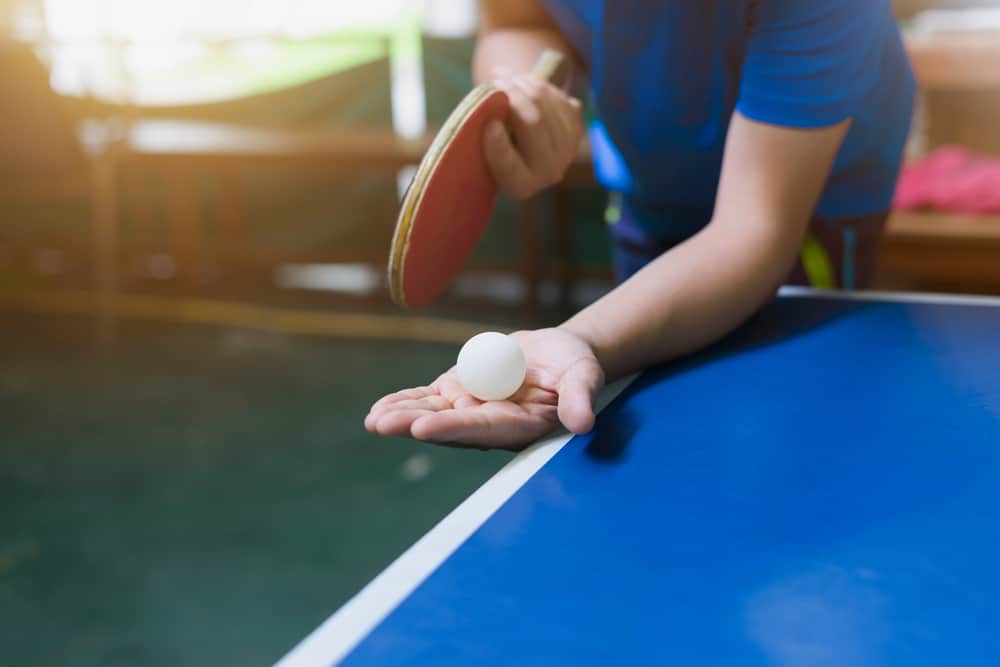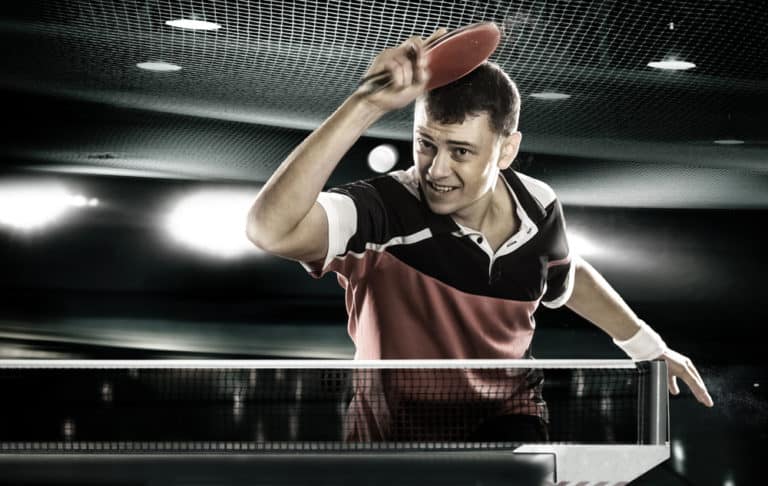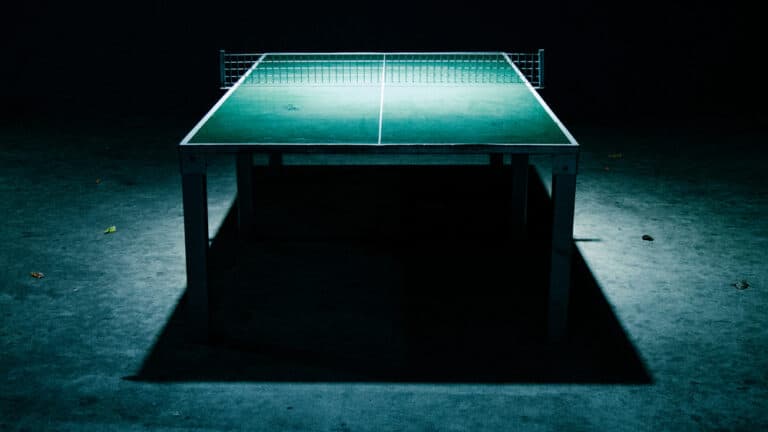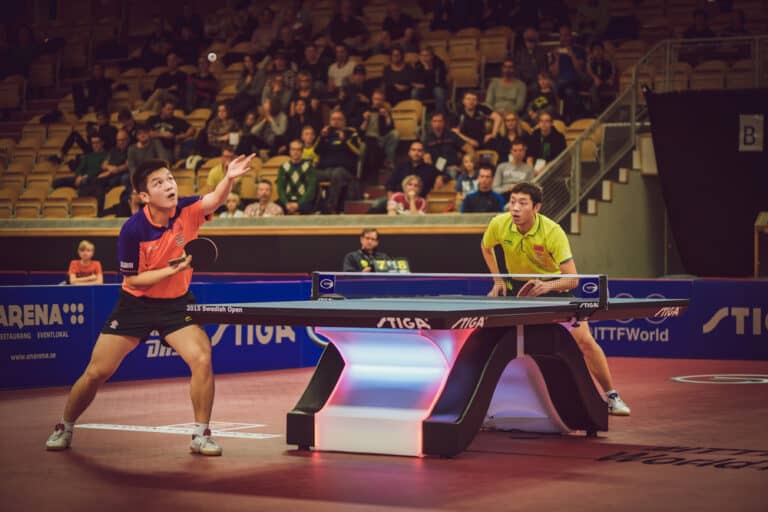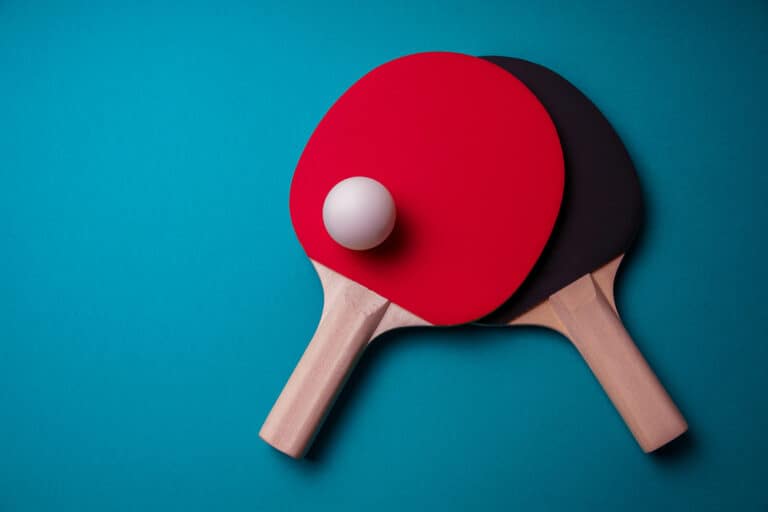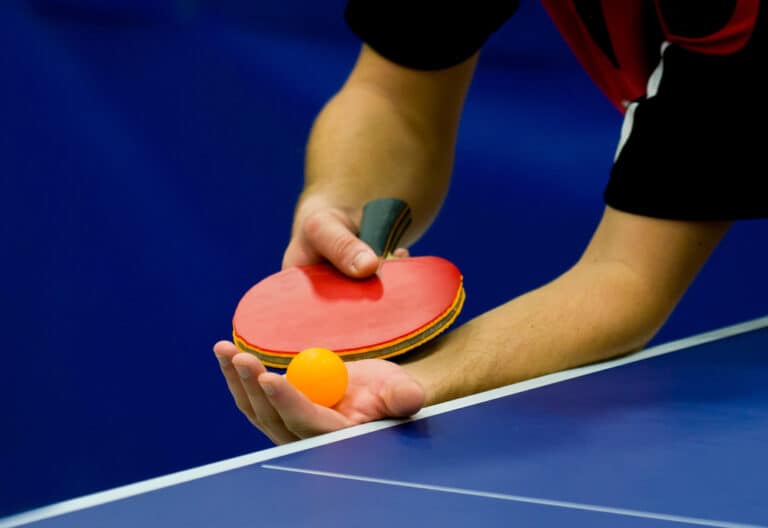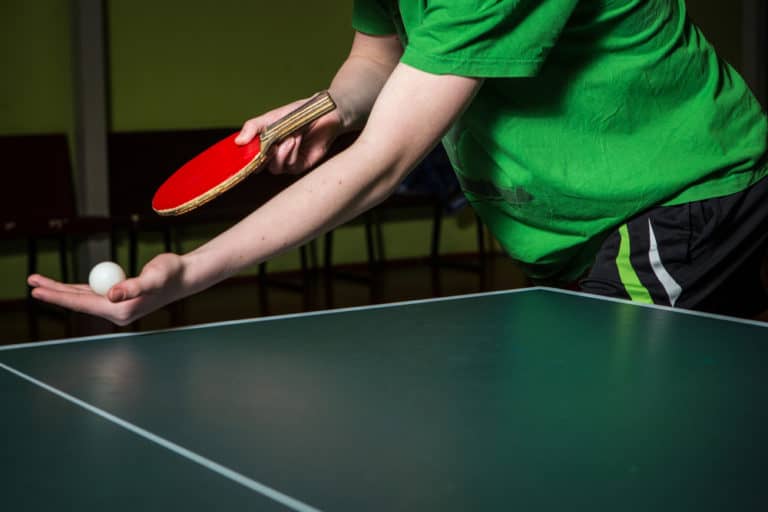Do You Have To Throw The Ball Up In Table Tennis?
All table tennis players are looking to gain an advantage during the game and are constantly looking for effective ways to gain a competitive edge when serving. Whether it’s adding spins or adjusting the speed of the ball, players will continue to test the limits, and the boundaries, of what they can do; however, there are general rules everyone should follow.
According to the ITTF, International Table Tennis Federation, the ball should be tossed vertically in the air, approximately six inches, without tampering. The ball should leave a free palm without any alteration and be struck during its descent without obstruction.
However, as many table tennis enthusiasts will tell you, tossing the ball six inches into the air was not always necessary. The rules have been adjusted many times during the 19th century. So, what are the rules of serving now, and why are they important to follow? Does throwing the ball in the air make that big of a difference, and what are the consequences for not doing it?
Why Should You Throw The Ball Up In Table Tennis?
There are various reasons why all players are obligated to through the ball 6 inches in the air before hitting it with the blade. Over the years, many players have gone to great lengths to improve their serve to gain an advantage as quickly as possible during the start of the game. However, the ITTF has constantly been renewing and altering rules to create a fair playing field.
Initially, the serve was just a way of getting the game started but soon became an opportunity for the serve to gain a point immediately. At first, servers used to obscure the view of the ball from the opponent to hide their intention of direction or spin. Servers also used their throwing hand to alter the ball’s spin before it hit the blade, changing the break’s direction.
Regarding the throwing of the ball in the air, the reason the ball has to be thrown in the air at least 6 inches is so the umpire can be sure the ball is struck by the blade upon its descent and not at any other point. Throwing the ball directly at the blade results in a faster, more powerful serve that the receiver can’t judge.
Most of these techniques are no longer accepted since it creates an unfair advantage for the server as the receiver cannot accurately judge what’s happening. Not being able to see the changes makes receiving challenging, as heavy spins tend to break away from the receiver even if the receiver has judged the direction accurately.
However, if a server can “deceive” the receiver while the ball and all the alterations are visible, it is considered legal as the server was able to outwit the receiver.
What Are The General Rules Of A Serve?
The ITTF manages all the general rules of ping pong to ensure a fair and, most importantly, entertaining game. All players should be able to use their skills and techniques to beat an opponent without deliberately trying to hide or cheat the opponent out of points.
Specifically, regarding the serve before the strike, all players are expected to abide by the following rules to create a fair game that’s entertaining for the spectators to watch and tests the ability of all players involved in a sportsmanlike manner:
Firstly, players should start the serve with the ball resting in the palm of the hand without any movement or alteration. The palm should be open, and the ball should be lifted straight into the air without the hand making any changes. The objective of the rule is to ensure that no spin is being added by the hand before it touches the blade.
Secondly, all players should throw the ball directly into the air, approximately six inches, and only make contact with it upon its descent. Nothing is allowed to touch the ball as it descends beside the blade, and nothing should obstruct the receiver’s view as the ball makes contact with it. The goal is to ensure that the ball is not directly thrown at the blade to increase speed.
It is worth noting that the ball should gain at least six inches in the air as it leaves the palm. Therefore, whether you throw the ball from your stomach or shoulder length, it should still go six inches away from the palm.
In addition, if the ball is thrown into the air, it is in play. Therefore, any mistakes made by the receiver after the ball has been thrown into the air will result in lost points.
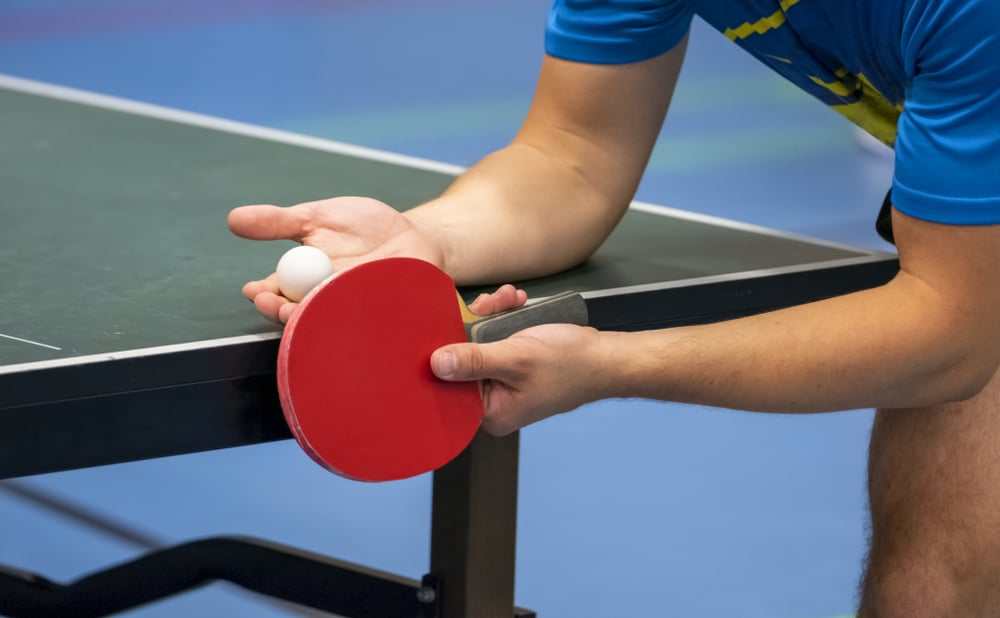
What Are The Consequences Of Not Throwing The Ball High Enough?
On rare occasions, players might try gaining an advantage by throwing the ball under the required height to increase the overall speed of the serve. Umpires have the power to penalize such discretions by awarding a point to the opponent if they suspect foul play.
In standard practice, umpires can give a warning, whether formal or informal, to the server if they are unsure about the legality of the serve. Therefore, the umpire can warn the server during the game or between rallies if they are suspicious about the fairness of the serve.
However, a warning will only be given once. If any transgression is then suspected again, whether similar to the first warning or different, a point will be awarded to the opponent.
It’s vital to note that although umpires can give a warning if they suspect a serve might be illegal, a warning is not necessary if it is clearly illegal. Umpires are allowed to award a point immediately to the opponent if the server fails to abide by the standard rules.
Conclusion
All servers should throw the ball directly into the air, at least six inches, so that the umpire can clearly see that the ball was not manipulated or thrown at the blade to increase speed to gain an unfair advantage during the serve. The server abides by the rules as long as the opponent and the umpire can clearly see the ball before it hits the blade.

